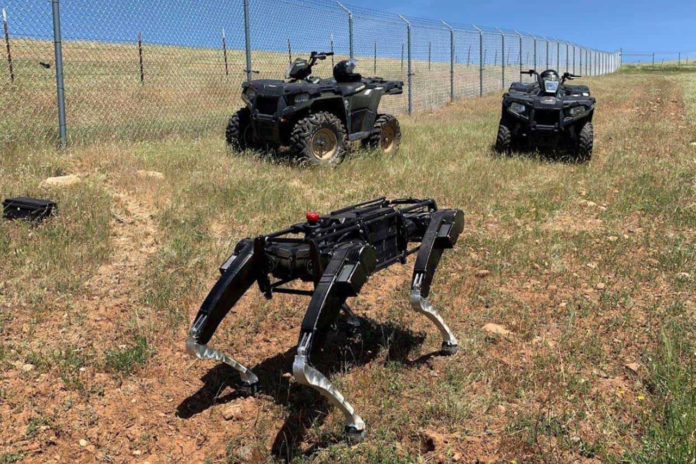The United States Department of Homeland Security (DHS) released new details this week of trials of quadrupedal robots on the southern border. The machines are being tested in surveillance-focused roles. The DHS did not give any timeline for the full-term deployment of the robots but said that the tests so far have been successful and that work with them will continue.
The Automated Ground Surveillance Vehicles, or the robot dogs, were specifically engineered by the research and development arm of the DHS, the Science and Technology Directorate (S&T), in cooperation with advanced robotics firm Ghost Robotics to support the country’s complex Customs and Border Protection (CBP) mission.
“The southern border can be an inhospitable place for man and beast, and that is exactly why a machine may excel there,” said Brenda Long, the Science & Technology Directorate (S&T) program manager in a blog post. “This S&T-led initiative focuses on Automated Ground Surveillance Vehicles, or what we call ‘AGSVs.’ Essentially, the AGSV program is all about…robot dogs.”
The quadrupedal machines are equipped with several cameras and sensors capable of transmitting video and other data in real-time to human operators. The DHS highlighted the possibility of customizing the equipment with night vision and zoom cameras or chemical, biological and nuclear sensors. They have been trialed for outdoor sentry duty, autonomously patrolling pre-set GPS waypoints while carrying cameras and sensors, for inspections of train cars at railyards, walking around and undercarriages, and exploring residential buildings, including a scenario that simulated being met by potentially hostile individuals.
The robot weighs 100-pound (45 kg) and is capable of traversing all types of natural terrain, including sand, rocks, and hills, as well as human-built environments like stairs. That’s why you want legs and not tracks, according to Gavin Kenneally, the chief product officer at Ghost Robotics. The machines could easily be linked up to artificial intelligence capabilities already in use on the battlefield with war drones and other state-of-art military equipment.
The robots seem familiar, it’s because they made headlines back in October, but those were carrying sniper rifles on their backs. The competitor of Ghost Robotics, Boston Dynamics, is against the use of a weapon by a robot.
The DHS says that due to the region’s demands, adding quadrupedal mechanical reinforcements is a smart use of resources. Despite the dangers, and maybe even using them as cover, there are many types of illegal activity that happen in the harsh border zones.
“Just like anywhere else, you have your standard criminal behavior, but along the border, you can also have human smuggling, drug smuggling, as well as smuggling of other contraband – including firearms or even potentially, WMD,” explained Agent Brett Becker of the CBP Innovation Team (INVNT). “These activities can be conducted by anyone from just a lone individual, all the way up to transnational criminal organizations, terrorists or hostile governments – and everything in between.”
Becker also added that the agents and offices have to contend with the rugged terrain, high heat, and humidity, and then they come across those who wish to do harm.
